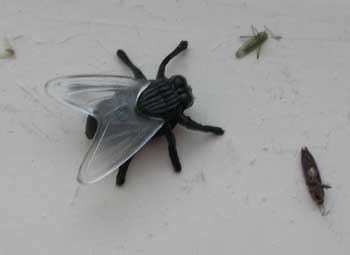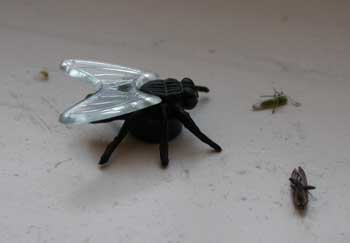Zur deutschen (österreichischen und schweizerischen) Version von Monopoly siehe Wikipedia.
bq. Interessant ist die Entwicklung der deutschen Monopoly-Version: Die erste deutsche Ausgabe, die in den 30er Jahren auf den Markt kam, enthielt als hochpreisige Straßennamen auch die Straße aus dem Berliner Nobelviertel Schwanenwerder. Dort wohnte auch Propagandaminister Joseph Goebbels. Er ließ das Spiel 1936 offiziell wegen des jüdisch-spekulativen Charakters verbieten, jedoch ging es ihm wohl mehr um die schon erwähnte Insel Schwanenwerder als teuerste Straße. In der allgemeinen deutschen Monopolyversion von 1953 ging man diesen Problemen später einfach aus dem Wege, indem man fiktive Straßennamen verwendete. Mittlerweile ist auch wieder die Originalversion mit den Berliner Straßennamen aus den dreißiger Jahren erhältlich. Im Gegensatz zum Schweizer Monopoly sind nur Straßennamen, jedoch keine Städte aufgeführt.
Apparently Hasbro is bringing out a version of Monopoly with a toy credit card and reader instead of paper money (Sky News, via Gizmodo). Some commenters on Gizmodo are adamant that they won’t play any version without the streets of Atlantic City – a problem that doesn’t worry those of us who learnt the game in Britain. AC doesn’t feature on the Monopoly pub crawl route.

bq. Monopoly Here and Now Electronic Banking costs around £24.99, compared to £12.99 for the standard “cash” version.
I’m not sure how new this is, as an electronic banking version appeared in 2005, even in Germany, together with an updated Berlin version.
But apparently there are many versions of Monopoly now. Wikipedia has useful information, including on the online version, and links to other language versions.
What worries me more is the impression I get that Mr. Potato Head, one of my favourite toys when I was a child (I must have been one of the earliest users), is now – for PC reasons? – played without real potatoes. It was invented in 1952, and a plastic body was added in 1964. What an impoverished world we live in.
bq. In 1974 the main potato part of the toy doubled in size and the size of its accessories were similarly increased. This was done mainly due to new toy child safety regulations that were introduced by the U.S. government. Hasbro also replaced the holes with flat slats, which made it impossible for users to put the face pieces and other body parts the wrong way around. In the 1980s Hasbro reduced their range of accessories for Mr. Potato Head to one set of parts. They did however reintroduce round holes in the main potato body, and once again parts were able to go onto the toy the wrong way around.
I should think so too. Where’s the fun if you can’t put the body pieces in the wrong way round?






